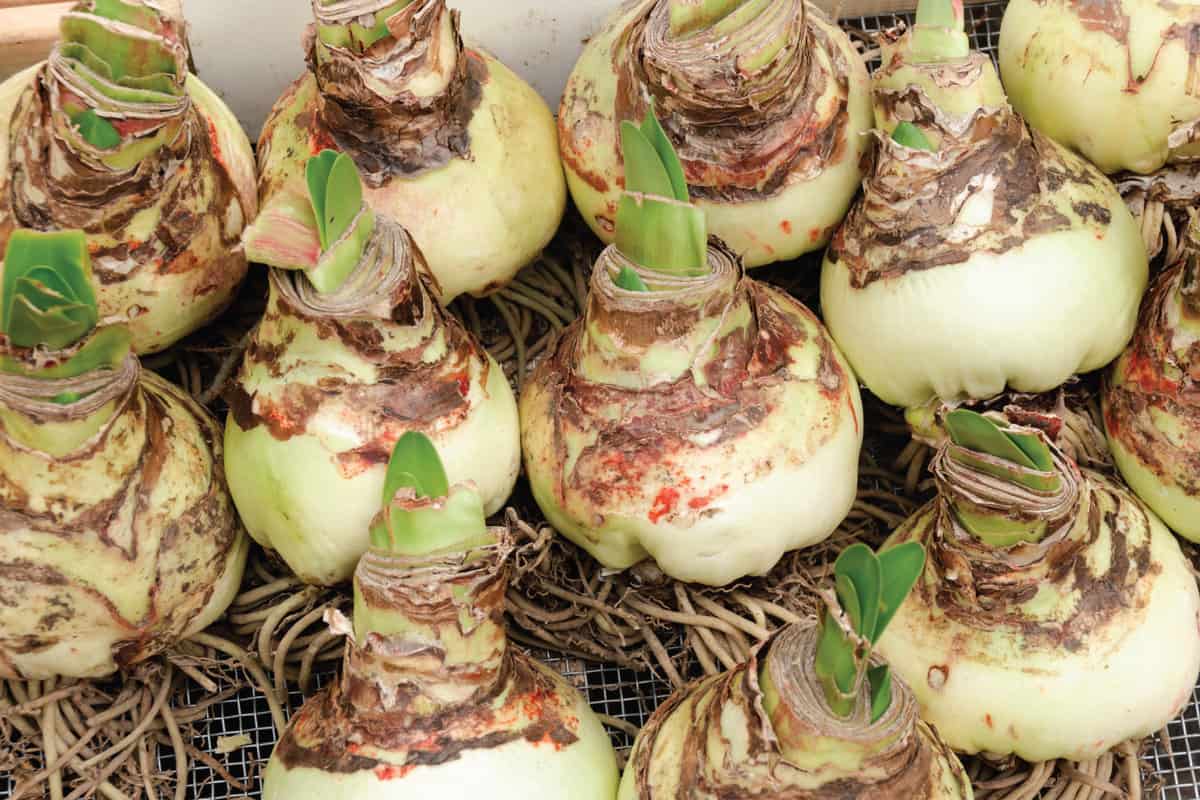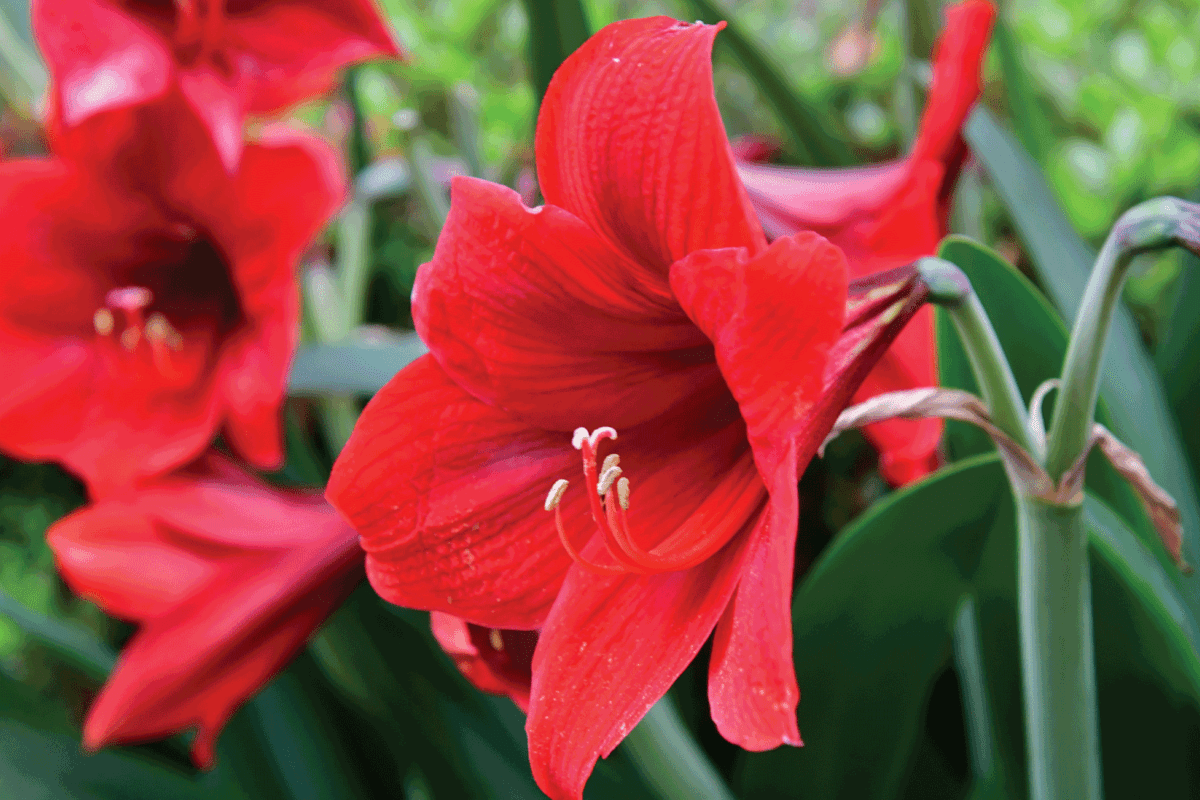Would you like to know when to divide amaryllis bulbs in Florida? Well, we have researched this topic and have the answers for you. It's vital to know when to divide amaryllis bulbs in Florida to ensure the best health of your plants.
In Florida, you should divide amaryllis bulbs in the fall when their leaves start turning yellow and dying. It's best not to divide amaryllis bulbs while the plant is still active to avoid stressing it.
This article will teach you when to divide amaryllis bulbs in Florida. We will also learn the answers to other interesting questions, such as what hardiness zone do amaryllis bulbs like, and how do you protect amaryllis bulbs from winter? Keep reading to learn more.
When To Divide Amaryllis Bulbs In Florida
If you live in Florida, it's best to divide your amaryllis bulbs in the fall when their leaves begin to turn yellow and die.
When the leaves start to yellow, it's a sign that the amaryllis is entering its dormant phase. During an amaryllis dormant phase, the bulbs will use less energy and will be less susceptible to damage while dividing.
The exact time you want to divide your bulbs will depend on what part of Florida you're in. In you live farther north, your amaryllis leaves will start turning brown sooner, allowing you to divide in early fall. In the south of Florida, you will need to wait until mid to late fall before your amaryllis starts going dormant.
The reason Florida has such a range of dormancy times for amaryllis bulbs is that Florida contains four different hardiness zones.
From north to south, Florida contains Hardiness Zones 8 through 11. These hardiness zones all provide an excellent environment for growing amaryllis bulbs outside year round.

How To Divide Amaryllis Bulbs
The first step to dividing amaryllis bulbs is to get them out of the ground. Two tools are best for removing amaryllis bulbs from the earth: shovels and pitchforks.
To use a shovel to remove amaryllis bulbs from the ground, dig a circle around a clump of bulbs about six inches away from the bulbs. Each time you press the shovel head into the ground, push down on the handle slightly to lift the bulbs gently from the ground.
![reminders on dividing amaryllis bulbs on the ground. When To Divide Amaryllis Bulbs In Florida [And How To]](https://gardentabs.com/wp-content/uploads/2022/09/reminders-on-dividing-amaryllis-bulbs-on-the-ground.-When-To-Divide-Amaryllis-Bulbs-In-Florida-And-How-To.jpg)
After a few rotations around the bulbs lifting as you rotate, the bulbs will be loose and near the surface. Now, you can grab the bulbs with your hand and lift them off the ground.
Using a pitchfork is very similar to using a shovel. Dig in a circle around a clump of bulbs, and lift as you rotate. The pitchfork will allow dirt to fall through while lifting the roots.
The pitchfork can also lift the roots out of the ground to be set aside. Many professionals prefer to use pitchforks over shovels for their increased dexterity.

What Hardiness Zone Do Amaryllis Bulbs Like?
Amaryllis bulbs are tropical and prefer warmer temperatures. They like to grow in Hardiness Zones 8 and higher. Amaryllis bulbs can also grow in Hardiness Zone 7 but may be at risk of frigid winters.
The reason amaryllis bulbs can grow year round in Florida is that Florida is in Hardiness Zone 8 and higher. Other places where amaryllis bulbs can grow year round are much of the south and west coast. These areas all have Hardiness Zones 8 or higher and won't freeze amaryllis bulbs in the winter.
If you live in a part of the United States with a Hardiness Zone of less than 7, you will need to protect your amaryllis bulbs from frost. If you leave amaryllis bulbs outside during a winter storm, they may freeze and die.
Not living in a suitable climate for amaryllis bulbs shouldn't stop you from enjoying their beauty. You can still grow amaryllis bulbs from spring to fall in Hardiness Zones less than 7 if you store your bulbs inside for the winter.
How Do You Protect Amaryllis Bulbs From Winter?
To protect your amaryllis bulbs from winter frost, you will need to remove them from the ground. As mentioned before, a shovel or a pitchfork is the best tool for removing amaryllis bulbs from the soil.
In the fall, when the tops of the bulbs have died, before the temperature drops below freezing, take a shovel or pitchfork and remove the bulbs by lifting them in a circular pattern.
Next, set your bulbs in a dry place outside where they can get sunlight. Setting the bulbs in the sunlight for a few days will allow them to dry out, which will help them keep better.
Next, transfer the bulbs into a five-gallon bucket and store them in a cold dark place until spring. The bulbs must stay dry and cool to prevent premature sprouting. A cellar or basement would be the perfect place to store amaryllis bulbs for the winter.
After there is no longer a chance of below-freezing temperatures, you can plant the bulbs outside. Check when it's safe to plant bulbs in your area since different parts of the United States require other planting windows.

How Do You Get An Amaryllis Bulb To Bloom?
One unique attribute of amaryllis bulbs is their ability to be encouraged to bloom. The trick is to provide the bulb with warmth and water, telling the bulb that the conditions are right to bloom, and it will start growing.
Take a bulb that has been dormant for six to eight weeks and place it in a pot. Fill the pot with soil, and put it in a warm location. A window seal that gets lots of light is good as long as your house is kept warm.
Now give your amaryllis bulb a big drink of water. Don't oversoak the soil, but saturate it with enough water for the bulb to drink. You want the ground to be wet, but you don't want pools of water sitting on the bulb.
After a week, you will see signs that your bulb is growing. After six to twelve weeks, your amaryllis bulb will be in bloom. There is an extensive range in bloom times because different species of amaryllis bulbs take vastly different times to bloom.
Why Won't My Amaryllis Bulb Bloom?
If your amaryllis bulbs don't bloom, there could be several likely culprits. The common causes of your bulbs not blooming are low light, overwatering, low nutrients, and low growing space. Let's look at each problem and learn how to identify them and what to do about them.
![causes of amaryllis bulb not blooming. When To Divide Amaryllis Bulbs In Florida [And How To]](https://gardentabs.com/wp-content/uploads/2022/09/causes-of-amaryllis-bulb-not-blooming.-When-To-Divide-Amaryllis-Bulbs-In-Florida-And-How-To.png)
Low Growing Space
Low growing space is one common reason your amaryllis bulbs may not bloom. If you plant your bulb in a pot that is too small, the plant may be stunted. If your plant is stunted enough, it may not bloom.
Signs that your growing space is too low include your plant showing little growth and the bulb being nearly as large as the container. If low growing space is the culprit, then the solution is to transplant the bulb to a larger container.
The container for your amaryllis bulb should be at least twice as wide as the bulb. This will allow enough space for your amaryllis bulb to produce proper blooms.
Low Light
Another cause of your amaryllis bulbs not blooming is low light. Light is the number one way that plants make food. Without enough energy from light, your amaryllis bulb may not bloom.
If you see that your amaryllis is small and isn't getting enough light, you will need to increase the light. You can either move your plant to a sunnier window or buy a grow light. If you would like to buy a grow light to help your plants grow in low-light environments, here are two of the best available on Amazon.
Grow Light with Stand
You can find this product here on Amazon.
LED Grow Light
You can find this product here on Amazon.
Low Nutrients
Low nutrients can be another cause of your amaryllis bulbs not blooming. A lack of nutrients in the soil is usually the case if you use poor soil from outside. If you use potting soil, then it comes pre-packed with fertilizers.
If you see that your amaryllis plant is stunted but it's getting plenty of water and sunlight, you need to fertilize your plant. Sprinkle a small handful of granulated fertilizer around the top of your soil that contains all three essential nutrients for plants.
These nutrients are phosphorous, nitrogen, and potassium. You want to use a fertilizer with a PNK number indicating an even mix of all three of these nutrients. Here are two of the best fertilizers on Amazon that will provide all the essentials for amaryllis bulbs.
Jacks Classic All Purpose Fertilizer
You can find this product here on Amazon.
GreenView Multi-Purpose Fertilizer
You can find this product here on Amazon.
Overwatering
Another reason your amaryllis bulbs may not bloom is overwatering. If you overwater your amaryllis bulbs, they will turn yellow and die.
The bulbs die when overwatered because they can't breathe when submerged. You want to provide damp soil but don't want pooling water on the bulbs.
If you have overwatered your bulbs, you should stop watering for a few days to allow the soil to dry. If there is sitting water in the pot, you should pour it out so the bulb can breathe. After a few days with less water, your amaryllis bulbs will start to recover, and in time they should bloom.
![Top view of dry bulbs of Amaryllis or hippeastrum before winter storing on wooden background. When To Divide Amaryllis Bulbs In Florida [And How To]](https://gardentabs.com/wp-content/uploads/2022/09/Top-view-of-dry-bulbs-of-Amaryllis-or-hippeastrum-before-winter-storing-on-wooden-background.-When-To-Divide-Amaryllis-Bulbs-In-Florida.png)
Final Thoughts
In this article, we learned that it's best to divide amaryllis bulbs in during the fall in Florida after the leaves turn yellow. We also learned that amaryllis bulbs like warm climates and that precautions must be taken to help them survive winter outside warm temperatures.
Remember, you can make amaryllis bulbs bloom in the winter with some warmth and water.
We hope you enjoyed this article. If you want to learn more, check out these other posts:




